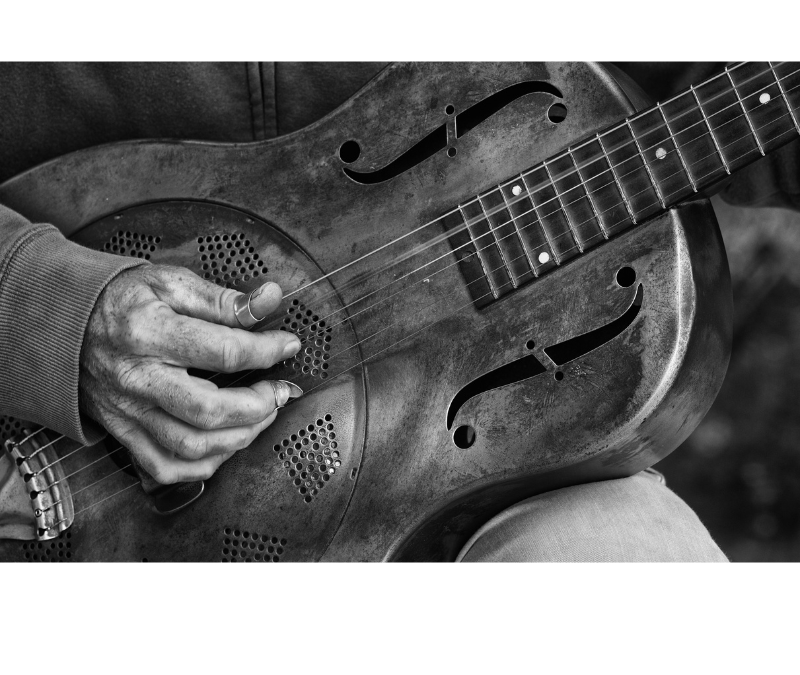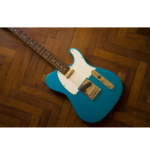Introduction:
Blues guitar scales are the cornerstone of the genre, providing the raw emotion and soulful expression that characterize this iconic style of music. From the smoky bars of the Mississippi Delta to the electrifying stages of Chicago, the blues scale has been the language of countless guitar legends, including the incomparable Buddy Guy. In this comprehensive guide, we’ll delve into the world of blues guitar scales, exploring effective strategies for improvisation, dissecting Buddy Guy’s masterful use of the blues scale, and unraveling the art of soloing over blues chord progressions.
Understanding the Blues Guitar Scale:
Before we delve into improvisation and soloing techniques, let’s first understand the foundation of it all – the blues guitar scale. The blues scale is a six-note scale that includes the root, flat third, fourth, flat fifth, fifth, and flat seventh degrees of the major scale. In the key of A, for example, the blues scale would consist of the notes A, C, D, Eb, E, and G.
Effective Strategies for Improvisation:
Improvisation is at the heart of blues music, allowing musicians to express their emotions freely and spontaneously. When improvising with the blues guitar scale, there are several strategies to keep in mind:
- Embrace the Blues Feel: The blues is all about feeling, so let your emotions guide your playing. Whether it’s sadness, longing, or joy, channeling your feelings through your guitar will add depth and authenticity to your improvisation.
- Experiment with Phrasing: Phrasing is crucial in blues guitar improvisation. Try incorporating bends, slides, and vibrato to add flavor to your melodies. Pay attention to the spaces between the notes, as silence can be just as powerful as sound.
- Explore Different Positions: Don’t limit yourself to one position of the blues scale. Experiment with different positions and fingerings to discover new melodic possibilities. Familiarize yourself with the entire fretboard to expand your improvisational arsenal.
- Listen and Learn: Study the improvisations of blues guitar greats like B.B. King, Albert King, and, of course, Buddy Guy. Pay attention to their use of dynamics, phrasing, and tone, and incorporate elements of their style into your own playing.
Buddy Guy and the Blues Scale:
Few guitarists have mastered the blues scale quite like Buddy Guy. Known for his electrifying performances and soulful improvisations, Guy’s playing embodies the essence of the blues. One of the hallmarks of Guy’s style is his fearless approach to bending and stretching notes within the blues scale, creating a sound that is both gritty and expressive.
In songs like “Damn Right, I’ve Got the Blues” and “Stone Crazy,” Guy showcases his mastery of the blues scale, weaving in and out of the scale with fluidity and precision. His use of dynamics and articulation adds depth and complexity to his solos, captivating audiences with every note.
Soloing Over Blues Chord Progressions with The Blues Guitar Scale
Soloing over blues chord progressions requires a combination of technical skill and musical intuition. Here are some tips for navigating blues chord changes with the blues scale:
- Understand the Chord Progression: Familiarize yourself with common blues chord progressions, such as the 12-bar blues or the minor blues. Pay attention to the chord changes and how they affect the underlying harmony.
- Target Chord Tones: When soloing over blues chord progressions, aim to target chord tones on strong beats. These are the notes that correspond to the current chord in the progression and will help create a sense of resolution and connection with the underlying harmony.
- Use Passing Tones: Experiment with passing tones to add movement and color to your solos. Passing tones are notes that are not part of the underlying chord but can be used to create tension and release.
- Develop Your Ear: Train your ear to recognize chord changes and anticipate the underlying harmony. This will allow you to improvise more effectively and respond intuitively to the music as it unfolds.
Conclusion:
Blues guitar scales are a rich and versatile musical language that has captivated audiences for generations. Whether you’re just starting out or a seasoned pro, mastering the blues scale opens up a world of creative possibilities. By embracing the blues feel, studying the masters like Buddy Guy, and honing your improvisational skills, you can unlock the soulful expression of the blues and take your guitar playing to new heights. So grab your guitar, dive into the blues scale, and let your emotions guide the way.

Download The FretDeck & Pentatonic Secrets Course!
Download Our Course









